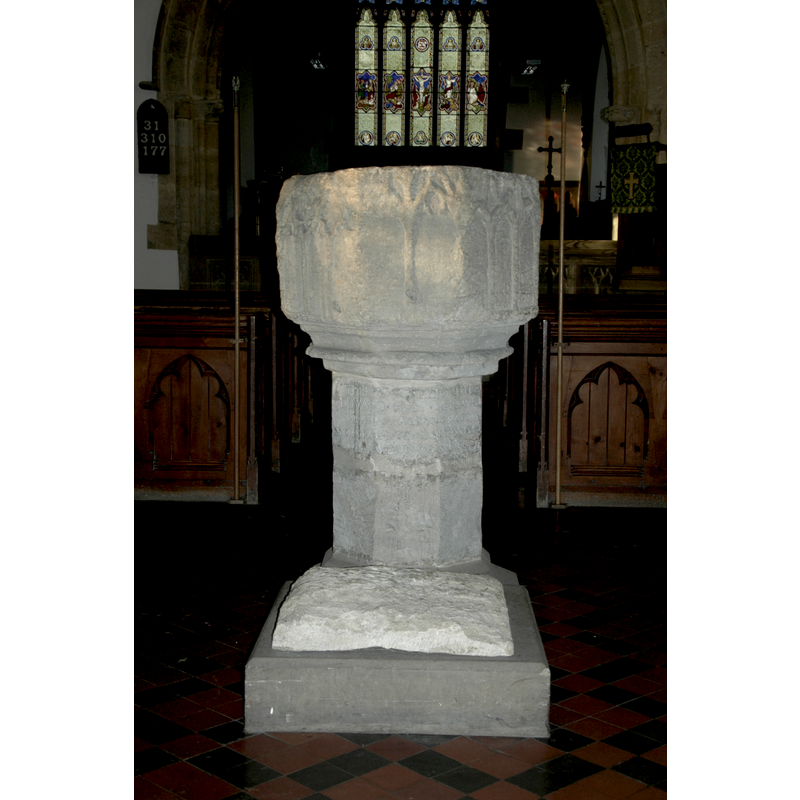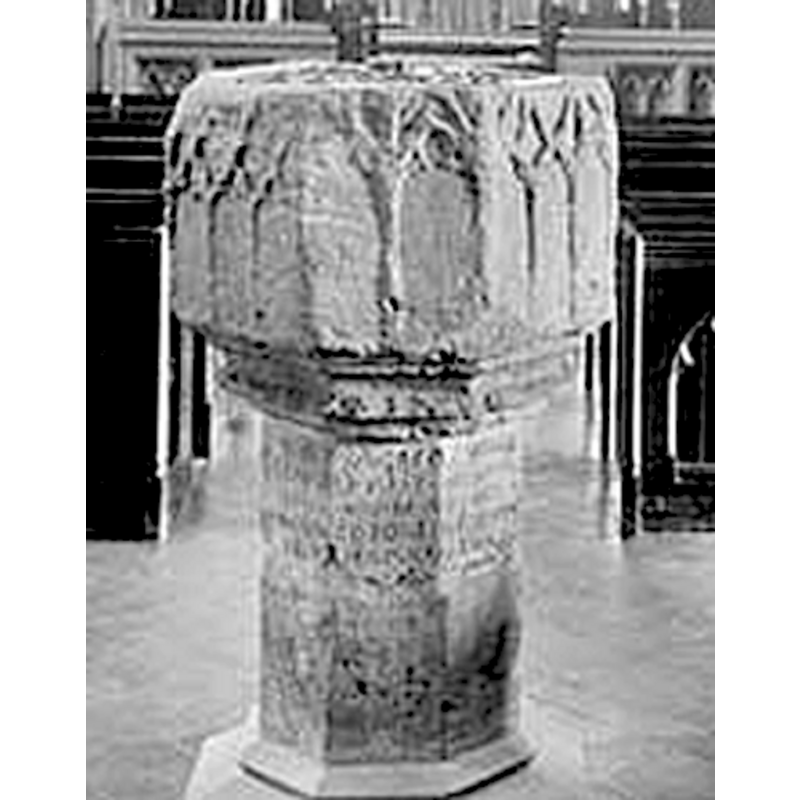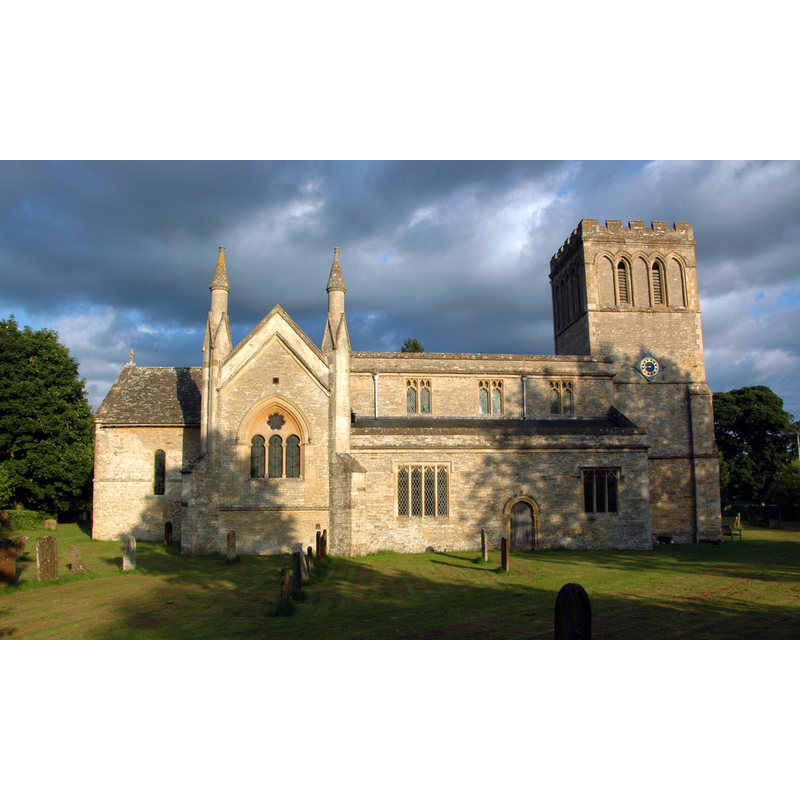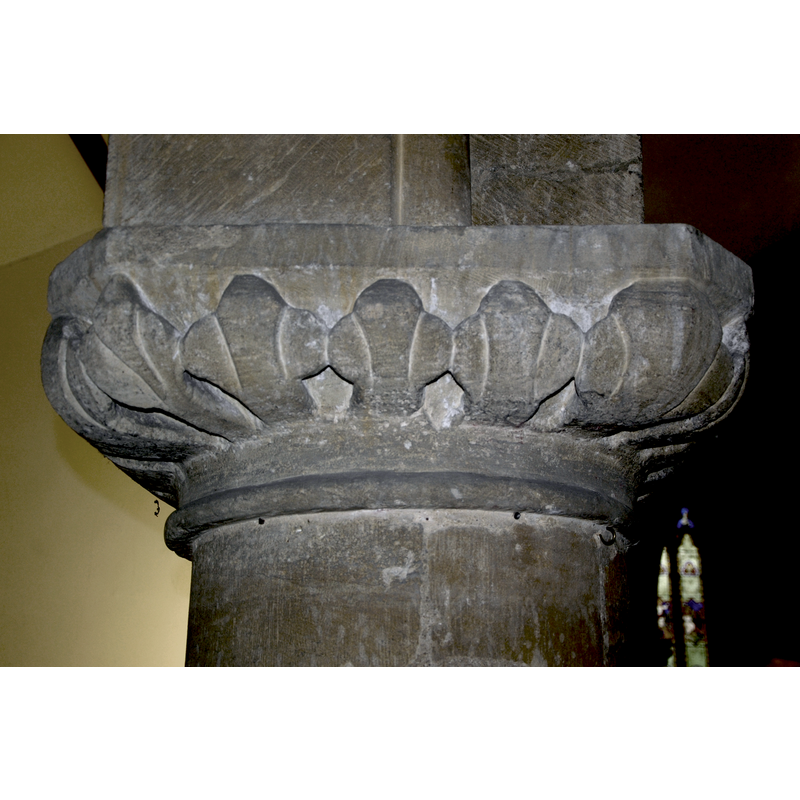Middleton Stoney / Mideltone

Image copyright © Motacilla, 2012
CC-BY-SA-2.0
Results: 13 records
design element - motifs - moulding
Scene Description: [cf. Font notes]
Copyright Statement: Image copyright © Motacilla, 2012
Image Source: edited detail of a digital photograph taken 14 June 2012 by Motacilla [https://commons.wikimedia.org/wiki/File:MiddletonStoney_AllSaints_Font.JPG] [accessed 13 December 2016]
Copyright Instructions: CC-BY-SA-2.0
design element - motifs - tracery - Gothic
inscription
Scene Description: [cf. Inscription Text]
Copyright Statement: Image copyright © Motacilla, 2012
Image Source: edited detail of a digital photograph taken 14 June 2012 by Motacilla [https://commons.wikimedia.org/wiki/File:MiddletonStoney_AllSaints_Font.JPG] [accessed 13 December 2016]
Copyright Instructions: CC-BY-SA-2.0
view of basin
view of church exterior - north view
view of church exterior - south portal
view of church exterior - southeast view
view of church interior - north aisle - capital
Scene Description: Source caption: "Church of England parish church of All Saints, Middleton Stoney, Oxfordshire: stiff-leaf Transitional capital of a column of the north aisle"
Copyright Statement: Image copyright © Motacilla, 2012
Image Source: digital photograph taken 14 June 2012 by Motacilla [https://commons.wikimedia.org/wiki/File:MiddletonStoney_AllSaints_Capital_N2.JPG] [accessed 13 December 2016]
Copyright Instructions: CC-BY-SA-2.0
view of font
Scene Description: [cf. Font notes]
Copyright Statement: Image copyright © English Heritage, 2002
Image Source: detail of a photograph taken in 1913 by Henry Taunt, in the Henry W Taunt Archive Holder [ref. no.: CC73/01329], English Heritage NMR
Copyright Instructions: No known copyright restriction / Fair Dealing
view of font
Scene Description: Source caption: " Church of England parish church of All Saints, Middleton Stoney, Oxfordshire: 14th century font, presented to All Saints' in 1860, and supposedly from King Edward the Confessor's chapel at Islip, Oxfordshire"
Copyright Statement: Image copyright © Motacilla, 2012
Image Source: digital photograph taken 14 June 2012 by Motacilla [https://commons.wikimedia.org/wiki/File:MiddletonStoney_AllSaints_Font.JPG] [accessed 13 December 2016]
Copyright Instructions: CC-BY-SA-2.0
view of font - east side
Scene Description: [cf. Font notes]
Copyright Statement: Image copyright © English Heritage, 2002
Image Source: detail of a photograph taken in 1913 by Henry Taunt, in the Henry W Taunt Archive Holder [ref. no.: CC73/01329], English Heritage NMR
Copyright Instructions: No known copyright restriction / Fair Dealing
view of font in context - east side
Scene Description: [cf. Font notes]
Copyright Statement: Image copyright © English Heritage, 2002
Image Source: photograph taken in 1913 by Henry Taunt, in the Henry W Taunt Archive Holder [ref. no.: CC73/01330], English Heritage NMR
Copyright Instructions: No known copyright restriction / Fair Dealing
view of font in context - west side
Scene Description: [cf. Font notes]
Copyright Statement: Image copyright © English Heritage, 2002
Image Source: photograph taken in 1913 by Henry Taunt, in the Henry W Taunt Archive Holder [ref. no.: CC73/01329], English Heritage NMR
Copyright Instructions: No known copyright restriction / Fair Dealing
INFORMATION
FontID: 12996MID
Object Type: Baptismal Font1
Church/Chapel: Parish Church of All Saints
Church Patron Saints: All Saints
Church Location: Middleton Stoney, Oxfordshire OX25 4JE
Country Name: England
Location: Oxfordshire, South East
Directions to Site: Located at crossroads B430-B4030, about 20 km N of Oxford [NB: not the same as Stoney Middleton, nr. Tideswell, Derbyshire]
Ecclesiastic Region: Diocese of Oxford
Historical Region: Hundred of Hirtlington
Font Location in Church: [cf. FontNotes]
Century and Period: 12th century [re-cut?] / 14th century, Norman [altered]
Font Notes:
Click to view
There is an entry for Middleton [Stoney] [variant spelling] in the Domesday survey [http://opendomesday.org/place/SP5323/middleton-stoney/] [accessed 12 December 2016], but it mentions neither cleric nor church in it. There is a short narrative of the harried life of this font [cf. infra] in Kennett (1818). Noted in Kelly's Directory (1911): "the font, of Late Decorated work, came originally from the King's Chapel at Islip, now destroyed; the inscription on it claiming that Edward the Confessor was baptised in it is, of course, incorrect". Lamborn (1945) gives a delightful narrative account of the travails of this font: "Probably the most travelled font in existence is the fourteenth century example which, since 1860, has been at Middleton Stoney, Oxon. On its tall hexagonal shaft is cut an inscription in roman caps of the seventeenth century asserting in halting verse that King Edward the Confessor had been baptised in it. The charter by which he granted the manor of Islip to Westminster Abbey contains the statement that he was born there. When Anthony Wood was at Islip on Friday, 28 June 1661, he saw the chapel of the manor, "now an old barne on the north side of the church," and heard from the sexton, ex relatione aeditui, that " the font wherof was lately taken away, bought by Sir Thomas Brown of Kiddington, where it is to be seen." Plot gives an engraving of it by Burghers in his ' History of Oxfordshire,' 1677, and adds the information that Brown had rescued it from indecent and profane uses; Hearne (1720) explains that an old woman had used it to mix food for her turkeys. J. C. Buckler drew it for the third ed. of Warton's 'History of Kiddington,' 1815. Dunkin, ' Hundreds of Bullington and Ploughley," 1823, says that it had been turned out of the chapel during the Commonwealth and taken to an inn, The Plume of Feathers, to be rescued by Mr. Brown at the Restoration in 1660. Skelton, 1823, says that it was then in the possession of the steward of Sir Gregory Page-Turner of Ambrosden. Meade Falkner, in Murray's 'Handbook,' 1894, states that Dean Ireland, rector of Islip, 1816-35, brought it back to Islip, and Blomfield, 'Deanery of Bicester,' iv, 71, adds that it was used as a flower vase in the rectory g arden until the sale of the rector's effects, when it was1 bought by Mr. Jonas Paxton, of Bicester, who presented it to the Countess of Jersey When 'Parker's Architectural Guide was compiled in 1846 it was "carefully preserved in the Rectory garden." Gardner's 'Gazetteer" 1852, notes that it was then to be seen in the garden of Mr. William Paxton of Layton's farm near Bicester. Soon afterwards it was given to Middleton church by Julia, Countess of Jersey, wife of the 6th Earl. There have been recent suggestions in the local pres* that it should be returned to Islip and placed in the church there. So it may go on its travels again." Noted in the Victoria County History (Oxford, vol. 6, 1959): "The remains of the existing mid-12thcentury building constitute the earliest evidence for the existence of a church at Middleton. It is not known at what date the advowson was granted to the Abbot and Convent of Barlings (Lincs.), but the donor was probably Gerard de Camville, who by his marriage to Nichole de Hay had become the patron of this Premonstratensian abbey, founded by his wife's uncle Robert de Hay in 1154. [...] Owing to extensive alterations in the 19th century, the architectural history of the church [...] is in some respects not easy to follow, and there is little documentary evidence to supplement that afforded by the fabric itself. The earliest parts of the existing church are the chancel and the enriched south doorway, which date from the mid12th century. The latter, however, is not in its original position, having been moved to its present setting when the south aisle was built in the 14th century. Late in the 12th century the existing chancel arch was built, and the nave was enlarged by the addition of a north aisle. The 'Transitional' arcade of three arches is supported on cylindrical columns with carved capitals. The arches are remarkable in that they are moulded on the south side only, their north face being flush with the wall above. [...] No medieval fittings survive [...] The present font, which replaces a former marble one of 18th- or early 19th-century date, was presented to the church by Julia, Countess of Jersey, in about 1860. It is said to have come from the King's Chapel at Islip, but before the end of the 17th century it had passed into the possession of the Brown family of Kiddington, who believed that it was the font in which Edward the Confessor was baptized and had an inscription cut on the base to that effect. [...] Its decoration is of 14th-century character, but it is possible that this has been cut on an older tub-shaped font"; a footnote in the VCH entry (ibid.) adds: "The font was later bought by Sir Gregory PageTurner, and in 1829 by Dean Ireland for Islip rectory: W.A.M. Reg. Bk. lxi, ff." Ettlinger (1962) [footnoted to E. A. Greening Lamborn, in Bodl. G. A. Oxon 4o 686, p. 208] repeats the Islip provenance and The Confessor's association of this font. Ettlinger (ibid.) adds: "When struck, the stone font sounds like a bell. It is the first 'pierre sonnante' that I can trace in England" [this latter part is footnoted "see Man, 1956, No. 73; 1959, pp. 85/6"]. In Sherwood & Pevsner (1974) who rematk on the 17th-century inscription, and on the possibility that "it could be an earlier tub font re-cut".
COORDINATES
Church Latitude & Longitude Decimal: 51.908, -1.22530U 622100 5752294
Church Latitude & Longitude DMS: 51° 54′ 28.8″ N, 1° 13′ 30″ W
MEDIUM AND MEASUREMENTS
Material: stone
Font Shape: octagonal (mounted) [originally a tub?]
Basin Interior Shape: round
Basin Exterior Shape: octagonal [originally round?]
INSCRIPTION
Inscription Language: Latin
Inscription Notes: [cf. FontNotes]
Inscription Location: on the sides of the pedestal base
Inscription Text: "'This sacred Font Saint Edward first receavd / From womb to grace; from grace to glory went / His virtuous life. To this fayre isle bequeathd / Prase ... And to us but lent. / Let this remaine -- the trophies of his fame; / A king baptised from hence a saint became."
There is also inserted in the pedestal: "This Fonte came from the King's Chapel, at Islip"
Inscription Source: [cf. FontNotes]
REFERENCES
Victoria County History [online], University of London, 1993-. Accessed: 2009-03-15 00:00:00. URL: https://www.british-history.ac.uk.
Ettlinger, Ellen, "Folklore in Oxfordshire Churches", 73, 3 (Autumn 1962), Folklore, 1962, pp. 160-177; p. 162 and fn 7, 8
Kelly, Kelly's Directory of Oxfordshire, London: Kelly's Directories Ltd., 1911
Pevsner, Nikolaus, Oxfordshire, Harmondsworth: Penguin Books, 1974
![[cf. Font notes]](/static-50478a99ec6f36a15d6234548c59f63da52304e5/compressed/1161213020_compressed.png)

![[cf. Inscription Text]](/static-50478a99ec6f36a15d6234548c59f63da52304e5/compressed/1161213021_compressed.png)




![[cf. Font notes]](/static-50478a99ec6f36a15d6234548c59f63da52304e5/compressed/1070627004_compressed.png)
![[cf. Font notes]](/static-50478a99ec6f36a15d6234548c59f63da52304e5/compressed/1070627003_compressed.png)
![[cf. Font notes]](/static-50478a99ec6f36a15d6234548c59f63da52304e5/compressed/1070627001_compressed.png)